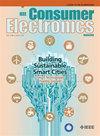SJ-PVC: An Efficient Perceptual Video Compression Scheme Based on Adaptive QP and Rate-Distortion Optimization
IF 4.3
2区 计算机科学
Q1 ENGINEERING, ELECTRICAL & ELECTRONIC
引用次数: 0
Abstract
Perceptual Video Compression (PVC) is a promising approach to enhancing compression efficiency. The Human Visual System (HVS) possesses many important perceptual characteristics, which can be utilized to further enhance encoding efficiency without significantly degrading perceptual quality. This paper addresses the issue that existing video compression methods have not fully leveraged HVS characteristics by proposing a video compression scheme, SJ-PVC, that uses a Just Noticeable Distortion (JND) estimation model based on HVS characteristics. Specifically, we design a structurally simplified network to address the structural redundancy in existing multi-scale feature-based Video Saliency Prediction (VSP) models. This network simplifies the model structure while maintaining high accuracy. Furthermore, we propose an adaptive Quantization Parameter (QP) selection algorithm that classifies each CU based on JND characteristics and saliency maps, allowing for more precise control of QP values, which significantly enhances the overall visual quality of the video. Finally, we introduce a Rate-Distortion Optimization algorithm based on HVS characteristics, which considers visual masking effects and saliency information during the encoding process to select the optimal encoding scheme. Experimental results demonstrate that SJ-PVC improves subjective video quality, significantly reduces bitrate, and shortens encoding time.基于自适应QP和率失真优化的高效感知视频压缩方案
感知视频压缩(PVC)是一种很有前途的提高压缩效率的方法。人类视觉系统(HVS)具有许多重要的感知特性,利用这些特性可以在不显著降低感知质量的前提下进一步提高编码效率。本文提出了一种视频压缩方案SJ-PVC,该方案使用基于HVS特性的刚可察觉失真(JND)估计模型,解决了现有视频压缩方法没有充分利用HVS特性的问题。具体来说,我们设计了一个结构简化的网络来解决现有的基于多尺度特征的视频显著性预测(VSP)模型中的结构冗余。该网络简化了模型结构,同时保持了较高的精度。此外,我们提出了一种自适应量化参数(QP)选择算法,该算法基于JND特征和显著性图对每个CU进行分类,从而可以更精确地控制QP值,从而显着提高视频的整体视觉质量。最后,我们介绍了一种基于HVS特性的率失真优化算法,该算法考虑了编码过程中的视觉掩蔽效应和显著性信息来选择最优的编码方案。实验结果表明,SJ-PVC提高了主观视频质量,显著降低了比特率,缩短了编码时间。
本文章由计算机程序翻译,如有差异,请以英文原文为准。
求助全文
约1分钟内获得全文
求助全文
来源期刊
CiteScore
7.70
自引率
9.30%
发文量
59
审稿时长
3.3 months
期刊介绍:
The main focus for the IEEE Transactions on Consumer Electronics is the engineering and research aspects of the theory, design, construction, manufacture or end use of mass market electronics, systems, software and services for consumers.

 求助内容:
求助内容: 应助结果提醒方式:
应助结果提醒方式:


